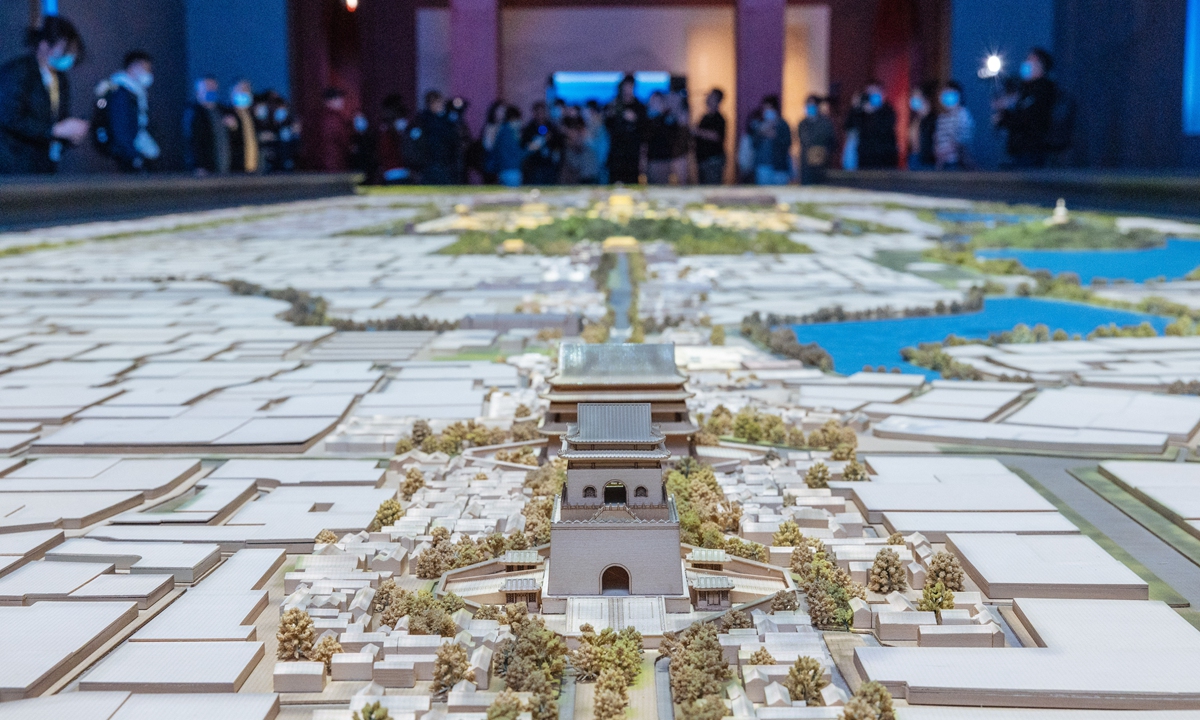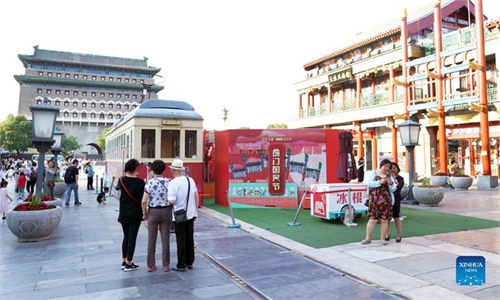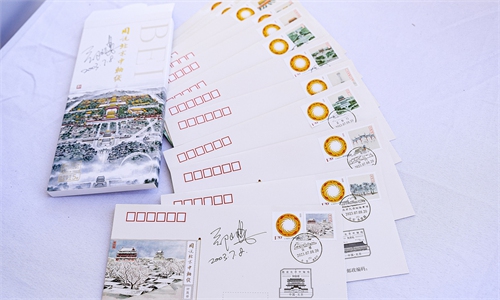ARTS / CULTURE & LEISURE
Art week comes to capital city, offering insights into Beijing Central Axis

A 16-meter-long model of the Beijing Central Axis Photo: Li Hao/GT
A kaleidoscope of events and art shows are set to offer people insights into the ancient Beijing Central Axis during the 2023 Beijing Central Axis International Art Week, scheduled from August 19 to 27.
A total of 22 art performances will be staged in theaters along the Central Axis, including dramas, dance shows, concerts, operas, shadow puppetry and folk art programs.
Led by sociologists, two city walks along the Central Axis will be held to take people on a cultural tour of the historical sites. Expats in Beijing will be invited to visit the Tianqiao Museum to savor folk performing arts and traditional acrobatic shows.
Kang Xi, a staff member with the Beijing Central Axis Protection Foundation, told the Global Times that the nine-day art week is designed to raise public awareness of the Central Axis and promote its culture through a wide range of events and art performances, bringing people closer to the cultural heritage.
Seen as the soul and backbone of Beijing, the Central Axis is the core area of the old city. A total of 7.8 kilometers in length, the Central Axis of Beijing starts at Yongding Gate in the south of the city, runs across the Zhengyang Gate, Tiananmen Square, the Forbidden City, Jingshan Hill, and ends with the Drum Tower and Bell Tower in the north.
The Central Axis took shape starting from the Yuan Dynasty (1279-1368), when Beijing became the capital of the country. As the most representative part of the old city, it is the core of traditional Beijing's urban design.
In January, the capital officially submitted its bid for the Beijing Central Axis to become a UNESCO World Heritage Site. The 21 member countries of the World Heritage Committee will decide on whether Beijing's Central Axis can be added to the World Heritage List at the committee's 46th annual conference in 2024.
A protection management plan for the Central Axis from 2022 to 2035 was also implemented in January.


